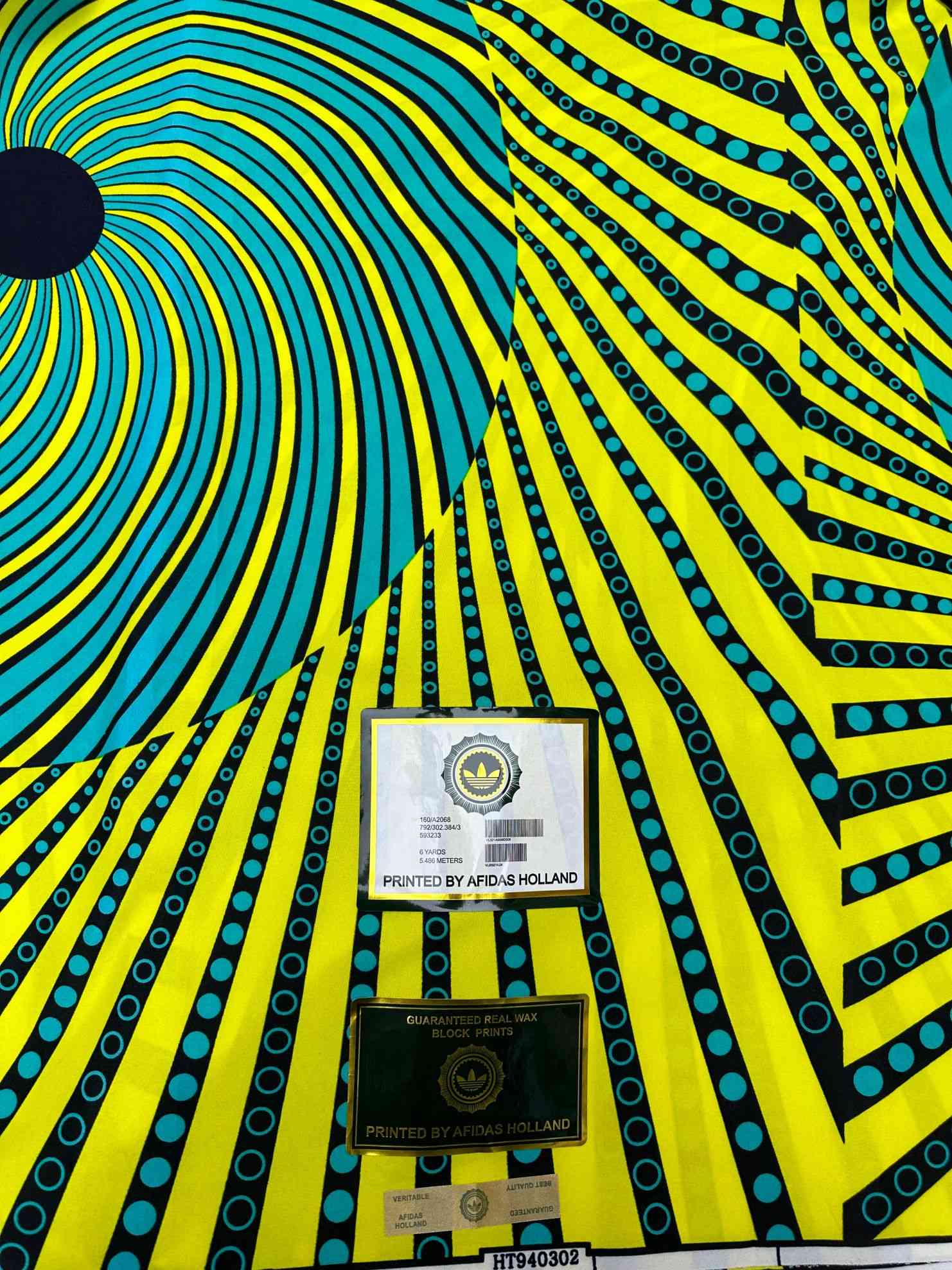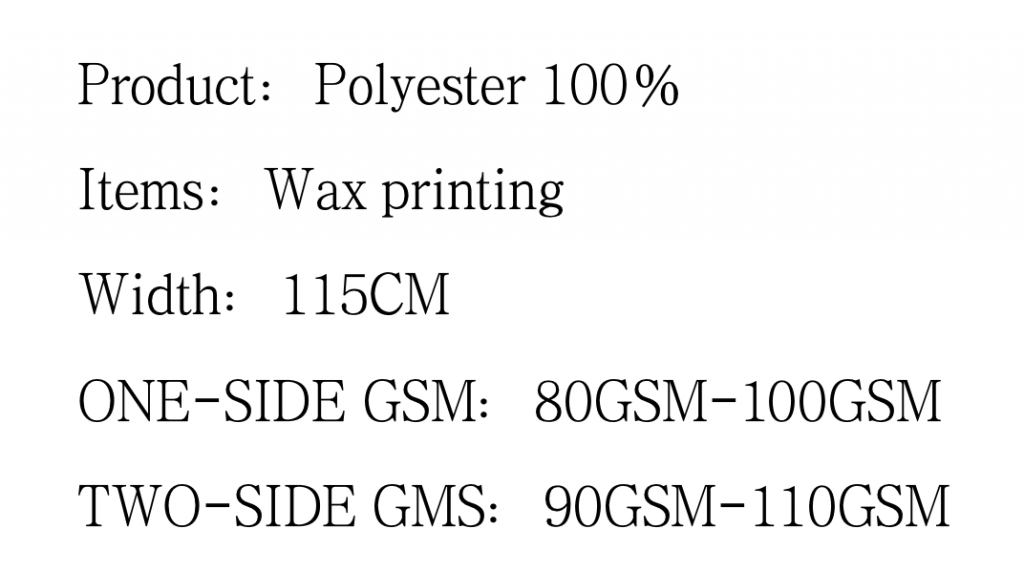Whatsapp: +86 15205751388 Email:Mayzzc@163.com

Wax Printing

Wax printing, a traditional fabric decoration technique, has a rich history and continues to captivate with its intricate patterns and vibrant colors. The art of wax printing involves using wax-resistant dyeing methods to create unique designs on fabrics. This article will explore the production process of wax printing and highlight important considerations.
Production Process
- Design Creation: The process begins with the creation of intricate designs. Skilled artisans or contemporary designers craft patterns on paper or digitally. These designs are then transferred to a fabric through the wax printing process.
- Wax Application: A wax mixture, often made from beeswax or paraffin wax, is applied to the fabric using tools like stamps, brushes, or blocks. The wax serves as a resist agent, preventing dye from penetrating the waxed areas.
- Dyeing: After wax application, the fabric is immersed in dye baths. The dye colors the unwaxed areas, creating a vibrant contrast against the waxed portions. This step can be repeated multiple times, using different colors to achieve intricate designs.
- Wax Removal: Once the dyeing process is complete, the fabric is dried and the wax is removed. This can be done through methods such as boiling, steaming, or ironing, which melt the wax and allow it to be absorbed into absorbent materials.
- Final Finishing: After wax removal, the fabric undergoes finishing processes like washing and ironing. This enhances the fabric’s appearance, softness, and colorfastness.
- Quality Control: Throughout the process, quality checks are performed to ensure the accuracy of the designs, color consistency, and overall fabric quality.
Considerations
- Fabric Selection: Choose fabrics that are suitable for wax printing, such as cotton, silk, or rayon. Natural fibers tend to absorb wax and dye more effectively, resulting in vibrant and long-lasting designs.
- Wax Quality: The quality of the wax used greatly affects the outcome of the prints. High-quality waxes ensure crisp patterns and smooth application.
- Design Complexity: Intricate designs may require experienced artisans or meticulous attention if done by beginners. Consider the complexity of the design in relation to your skills and resources.
- Dye Selection: Select dyes that are compatible with wax printing. Dye choice affects color intensity and durability. Natural or fiber-reactive dyes are commonly used in this process.
- Wax Application Techniques: Different tools yield different effects. Stamps offer consistent patterns, while brushes and blocks allow for more freeform designs. Experiment with different techniques for diverse results.
- Wax Removal: Proper wax removal is crucial to reveal the vibrant designs. Inadequate wax removal can lead to blotchy or uneven patterns. Follow recommended techniques for thorough removal.
- Environmental Impact: Be mindful of the environmental impact of wax printing. Traditional methods might involve the use of chemicals, while eco-friendly approaches use soy-based or vegetable waxes.
- Care Instructions: Wax-printed fabrics require special care. Gentle hand washing in cold water and avoiding harsh detergents can help maintain the vibrancy of the designs.
- Cultural Sensitivity: Wax printing has cultural significance in various regions. Be respectful and informed about the cultural context of the designs you use.
In conclusion, wax printing is a fascinating and intricate fabric decoration technique that involves a series of steps, from design creation to wax application, dyeing, and finishing. When engaging in wax printing, consider factors like fabric selection, wax quality, design complexity, dye selection, wax application techniques, wax removal, environmental impact, care instructions, and cultural sensitivity. By understanding the nuances of wax printing and paying attention to these considerations, you can create stunning and unique fabric designs that honor tradition and artistic expression.
